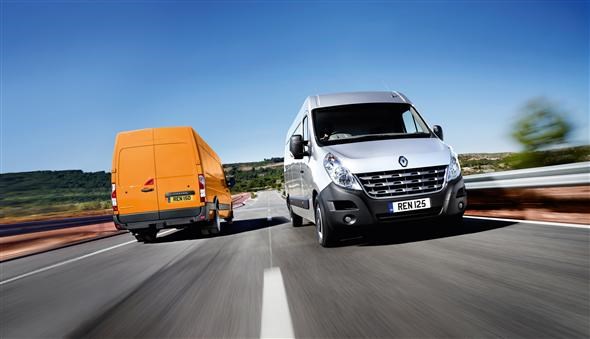Don’t know your barn doors from your bulkheads? Here’s a guide to van-based terminology.
ABS (Anti-lock Braking System) – Stops the brakes locking up under heavy braking, preventing a potentially-disastrous skid. You stop in the shortest distance possible but retain steering control too.
APR (Annual Percentage Rate) – The interest you have to pay on a loan agreement. The higher the APR, the more you’ll have to pay.
Barn doors – Large rear doors which open outwards from the rear of the van.
Balloon payment – At the end of some lease hire or hire purchase agreements you have to pay a large sum known as a balloon payment. Monthly payments will be lower over the length of the term if you choose such a scheme.
Bulkhead – A partition between the cab and the load area of the van. Can come in several different configurations including full-height, half-height, windowed, and with grille/mesh fitted.
Cabin – The area the driver and passengers sit in the van.
Contract hire – A financial agreement where you hire a van and return it at the end of a specified period.
Depreciation – The value your van drops by over a certain period of time.
Down-payment – To reduce monthly costs when buying a van on finance you can put down a lump sum at the start of the loan called a down payment.
EBA (Electronic Brake Assist) – Provides extra brake pressure in case of emergency to ensure the van stops over the shortest distance possible.
EBD (Electronic Brake Distribution) – Monitors the weight and speed of the van to provide optimal spread of braking between front and rear axles in all conditions.
ESP (Electronic Stability Programme) – Prevents the driver losing control of his vehicle by preventing a skid.
Frails – Fitted to the side of the van and used as an additional rack.
GAP insurance – If you’ve bought your van on a lease agreement then if it gets damaged your insurance company will only pay out the amount the van is worth at the time. However, the value of the van may be significantly less than the amount of finance out-standing, which means you’ll be short. GAP insurance prevents this eventuality.
GTW (Gross Train Weight) – The maximum allowed weight of the van and any trailer being towed, including any loads.
GVW (Gross Vehicle Weight) – The maximum allowable weight of the van including the weight of the fuel, driver, passengers and any load being carried.
Hire purchase (HP) – An agreement whereby the buyer pays an HP firm in instalments, effectively hiring the vehicle as the van is the property of the HP firm until the entire price is paid. If the contract is terminated then the van must be returned.
Lease – This is where a buyer rents a van for a set period of time, returning it at the end. This can work out much cheaper than buying out-right as you’re only paying off the depreciation of the van over the lease, so if you intend on getting a new van every three or four years then you could save significant amounts of cash.
Load space – The space available for goods inside the vehicle.
Load width – Usually quoted as minimum (distance between wheel arches) and maximum (distance between walls of van).
PAS (Power Assisted Steering) – A system which assists steering, making the van much easier to manoeuvre.
Payload capacity – The maximum goods weight the vehicle can transport.
PCP (Personal Contract Purchase) – The same as a van lease, but you have the option to buy the can at the end of the lease period.
Ply lining – Where a van has built-in plywood features such as shelving.
Residual value – The value of the van at the end of a set period of time, often calculated with regards to a lease agreement.
Roller doors – Doors which slide vertically.
Roof rack – A way of getting even more storage space; by storing items on the roof.
Side-loading doors – Sliding doors which enable loading from the side of the van.
Tailgate – The panel at the rear of pick-ups, dropsides and tippers which stops goods falling out of the back of the load area. On pick-ups and dropsides it is hinged at the bottom for easy loading, while on tippers it is hinged at the top so your payload can slide out.
Tail lift – Often seen on Luton vans, this is a hydraulic platform used to lift goods to the height of the load area.
Towing limit – The maximum weight of a braked trailer that your van can pull.
Turning circle – The smallest circular turn the vehicle is capable of making. Usually quoted in terms of kerb-to-kerb (k) or between walls (w).
Warranty – The agreement manufacturers offer in terms of maintenance when you buy a van. Explained in more detail here.
Wheelbase – The distance between the centre of the front wheel and the centre of the rear wheel. The longer the wheelbase, the more space you’ll have in the van.





